No matter where you are in your photography journey, there are simple techniques that you can use right now to take more memorable and dramatic images.
One of the easiest ways to amp up the wow factor in your travel photos is to fill the frame with your main subject. In other words, draw the viewer’s eye to the subject of your photo by getting closer or zooming in on the part that matters.
The fill the frame photography technique is such an easy way to make your travel and landscape photography images clean, simple, and dramatic.
And while it doesn’t work in every situation, it’s worth adding this composition technique to your bag of tricks.
Here’s what you’ll learn in this guide:
• What Does it Mean to Fill the Frame?
• Some Key Benefits of Filling the Frame in Your Photos
• When not to Fill the Frame in Photography
Some of the links on this site are affiliate links, meaning if you book or buy something through one of these links,
we may earn a small commission – at no extra cost to you! Read the full Disclosure Policy.
CAMERA GEAR FOR LANDSCAPE PHOTOGRAPHY
We use a Camera Gear Checklist to help us pack all the equipment we need when we go out to take photos – that way we don’t foget anything!
Below is a list of camera equipment we recommend for taking landscape photos:
1. Camera: If you’re looking for something new…
→ Check out the compact travel cameras we recommend!
→ Check out these awesome DSLR cameras!
2. Tripod: Using a tripod is something we always recommend for landscape photography, especially if you’ll photograph waterfalls or rivers. There are many compact and lightweight options out there that are easy to use.
→ Check out the tripods we recommend!
3. Camera Bag: Protecting your camera from the elements is essential. Using a camera backpack is so nice for hiking too.
→ Check out our camera backpack for outdoor photography.
4. Neutral density filter: There can be extreme differences in light when photographing landscape scenes. To compensate for this variance of light you’ll need to use a neutral density filter.
→ Check out the Kase magnetic filters we use!
5. Camera cleaning kit: You’ll want a field cleaning kit to remove dust or water drops that get on your lens. NOTE: this is not for cleaning the sensor.
→ This is the camera cleaning kit we use!
6. Memory cards: Purchase name brand memory cards since you’re trusting your images to the card!
→ We use Lexar and Sandisk!
7. External hard drive: Don’t forget to copy the photos to a portable external hard drive ‘just in case’.
→ Check out these awesome portable external hard drives.
8. Headlamp: If you’ll be taking pictures at sunrise or sunset, you’ll want a flashlight or headlamp to light your way when it’s dark. Wearing a headlamp allows you to set up your equipment without having to hold a flashlight. Remember to use the red light setting and keep the beam pointed on the ground in front of you to avoid disrupting other photographers in the area taking long exposure shots.
→ Check out these headlamps with the red light!
What Does it Mean to Fill the Frame?
You don’t need an expensive camera or equipment to make use of fill the frame photography. You can use your phone or whatever camera you have.
When creating your composition, ask yourself what exactly you are trying to capture. It could be an expression on your child’s face, an architectural detail, or a cascading waterfall.
Now, move closer to the subject until it fills your camera’s viewfinder or LCD screen. A zoom lens also works to fill the frame, but it definitely isn’t necessary.
Your own two feet work just as well. As you move around your scene, you can play around with different angles to create a more powerful image, but getting up close and personal to your subject is the #1 goal here.
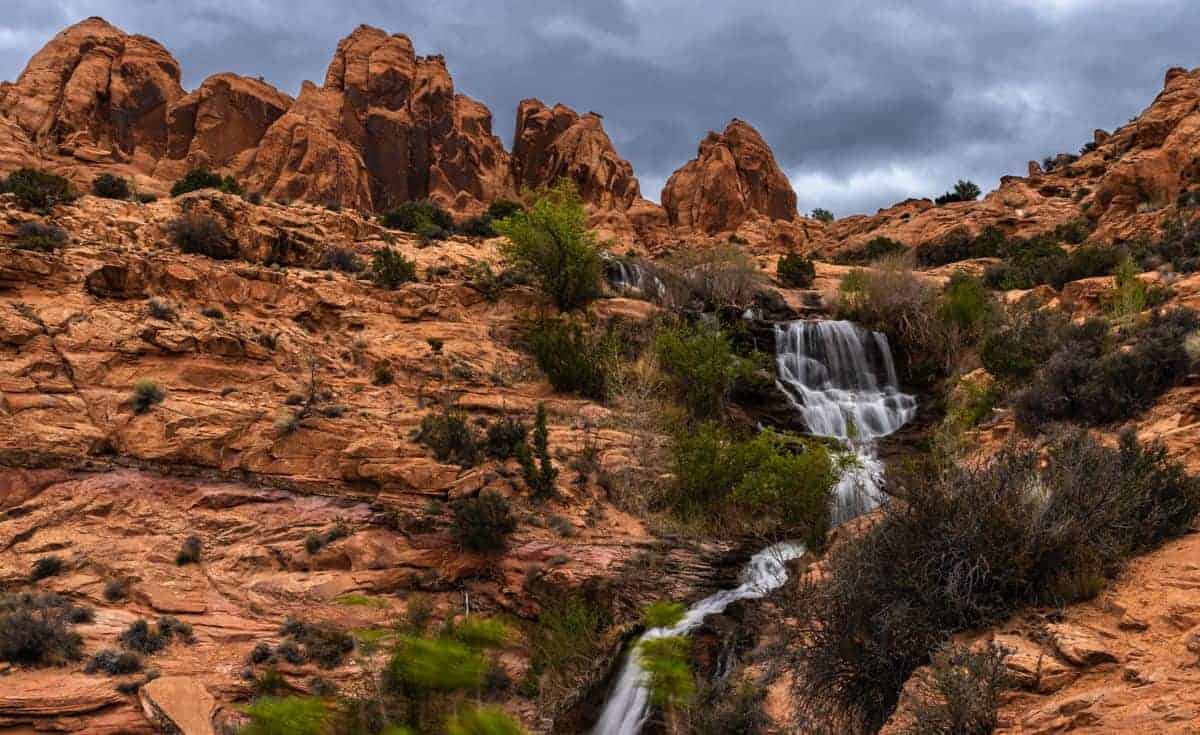
Wide angle image of Faux Falls in Moab, Utah.
Take a look at the photo above taken at Faux Falls in Moab, Utah. The image features a panoramic view of gorgeous red rocks, a cloudy sky, and a waterfall.
All the elements combine to create a pleasing image that any photographer would be proud of.
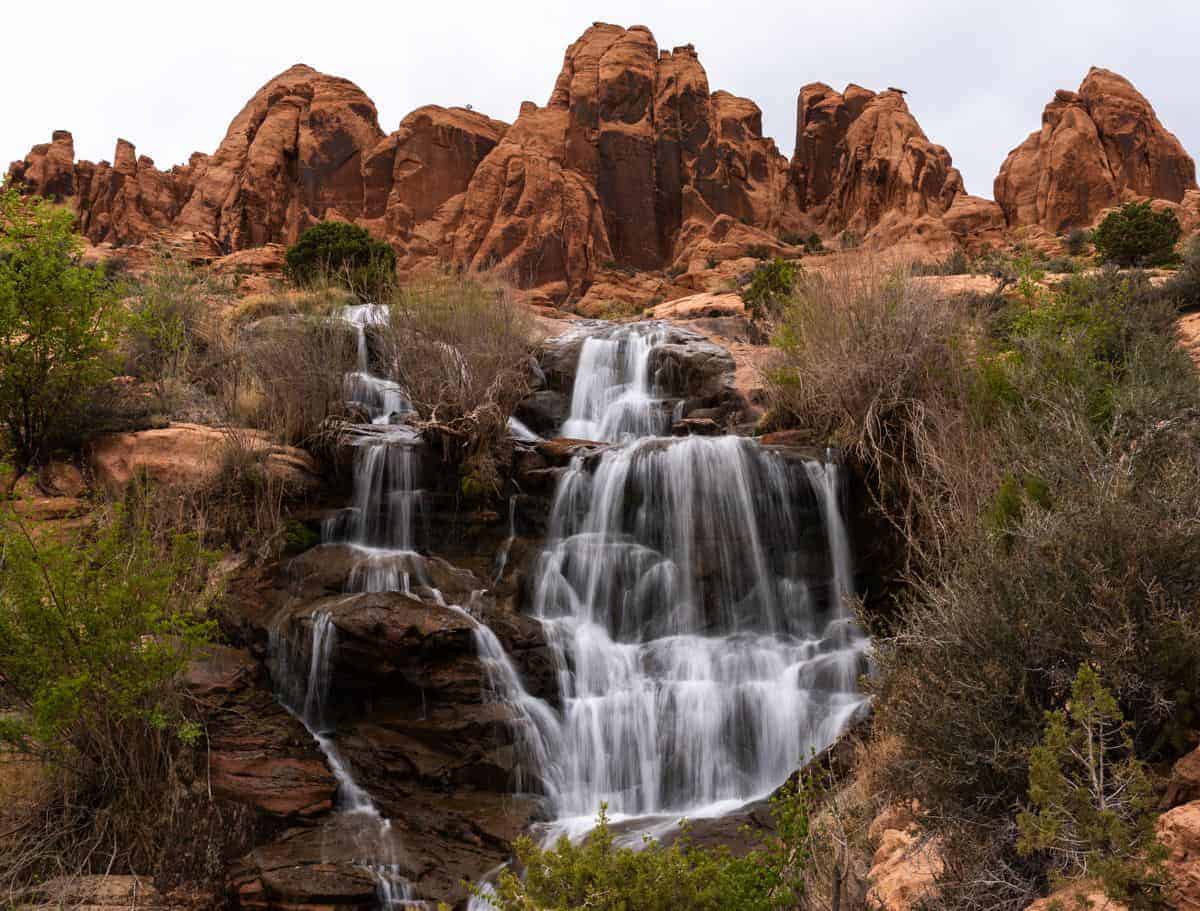
Fill the frame with Faux Falls and you get immediate impact!
In this photo, we’ve moved closer so that we can really focus on the beautiful waterfall and the jagged peaks behind it. Now the cascading waterfall is the star of the show.
Same elements as in the first photo, but a lot more impact! Using your own two feet to move closer to your subject is a great way to fill the frame.
Key Benefits of Filling the Frame in Your Photos
We’ve talked about how filling the frame adds impact to your photos, but there are other benefits to using this easy technique.
Capture More Detail in Your Photos
The larger your main subject, the more detail you will capture when you fill the frame.
That’s why close-ups make for such interesting shots. Zoom in on that insect, rock formation, or portrait and capture all the details your viewers would otherwise miss out on.
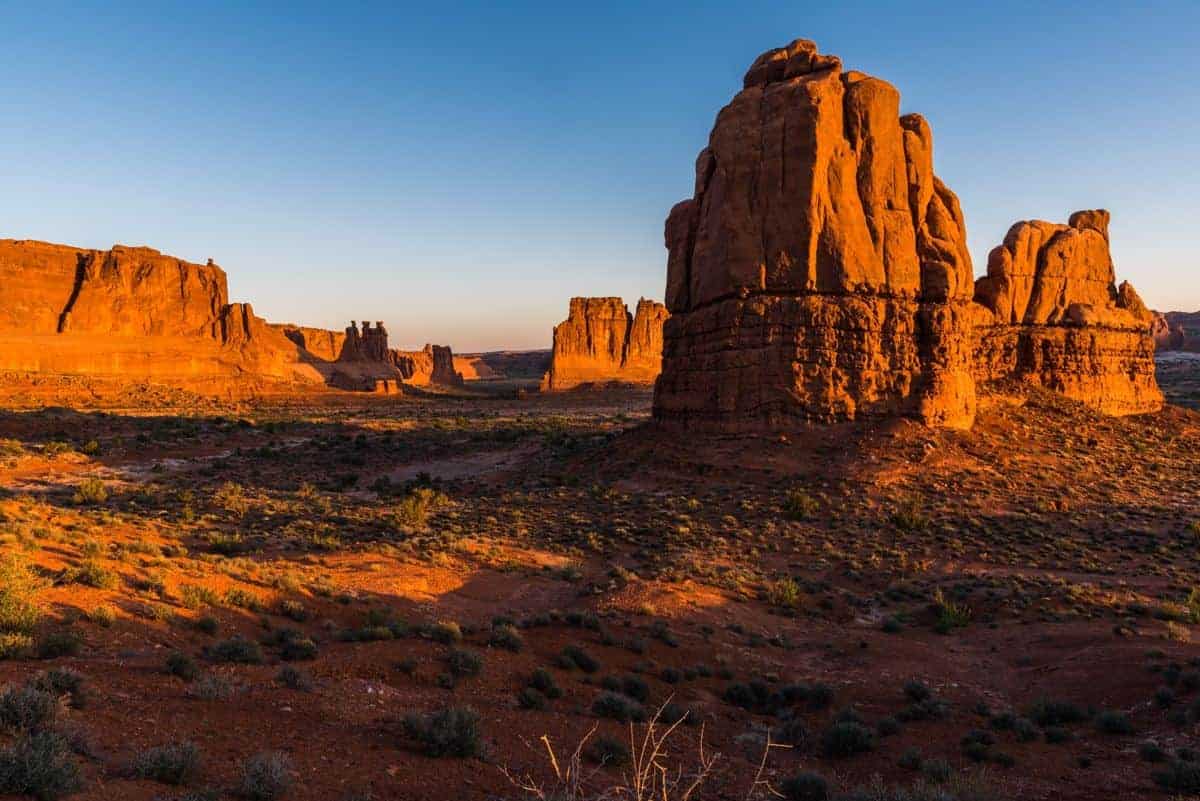
Wide angle view of the landscape found at Arches National Park.
The photo above is a beautiful wide angle image of the landscape you’ll find when you visit Arches National Park in Utah.
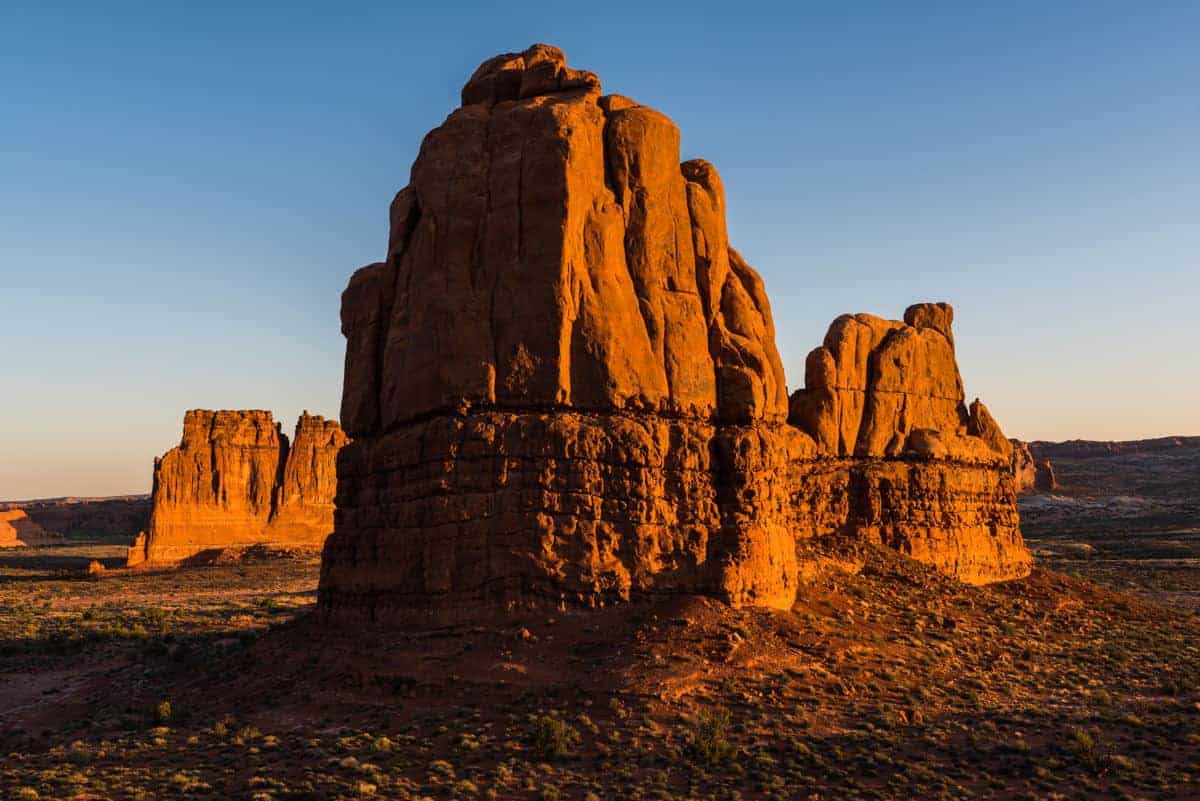
Fill the frame with the stone structures found at Arches National Park.
This photo that fills the frame really hones in on the details and unique structure of the individual rocks and helps viewers appreciate their immense magnitude.
Both of them feature the incredible stone formations found in the park, yet you can see that each photo has a different impact.
Composition Techniques for Landscape Photography
How to Photograph Waterfalls & Rivers
Get Rid of a Busy or Cluttered Background
Sometimes a wide panoramic scene tells a story and provides context, and other times it just provides clutter without adding to the photo.
This is especially true if you’re shooting portraits and street scenes, but even gorgeous landscape scenes can feel cluttered if there are too many elements for the viewer to take in. Get in closer to your subject and fill the frame until that busy background is no longer detracting from your composition.
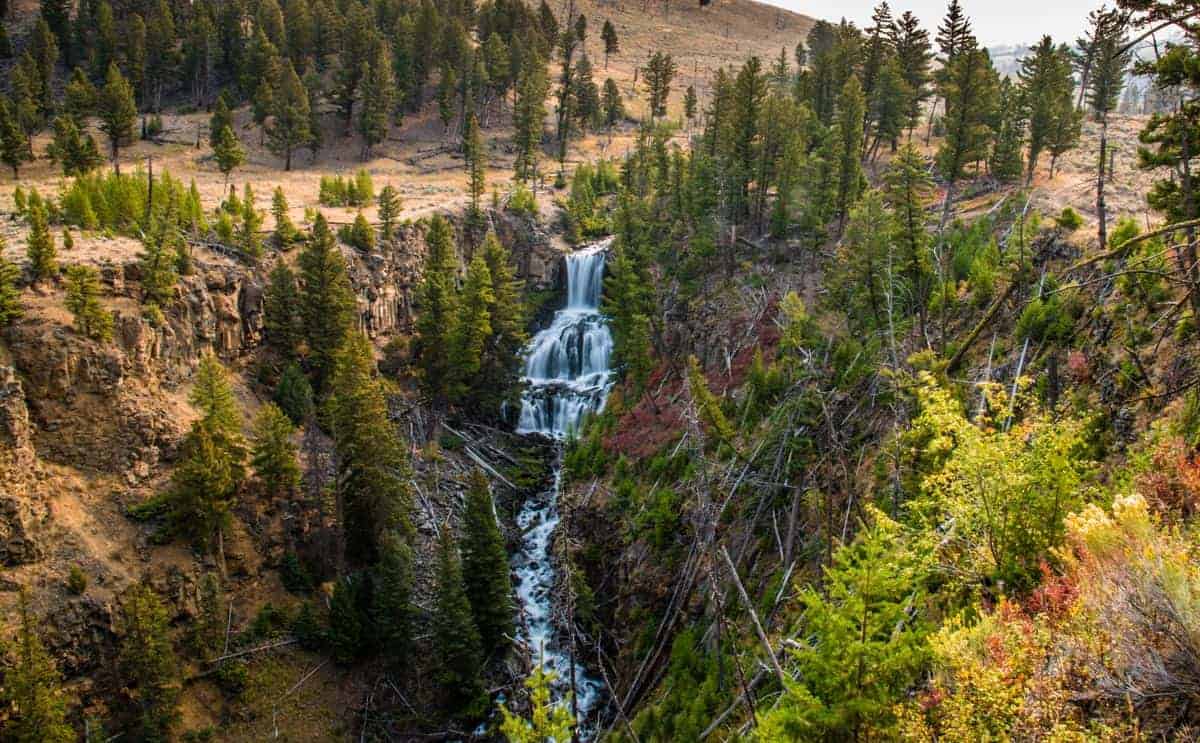
A wide angle view of Undine Falls in Yellowstone.
Take a look at the photo above of Undine Falls, one of the many waterfalls you’ll see in Yellowstone.
The image does a good job of showing you how the waterfall fits within the landscape. You also get an idea of the scale of the falls compared to the surrounding trees.
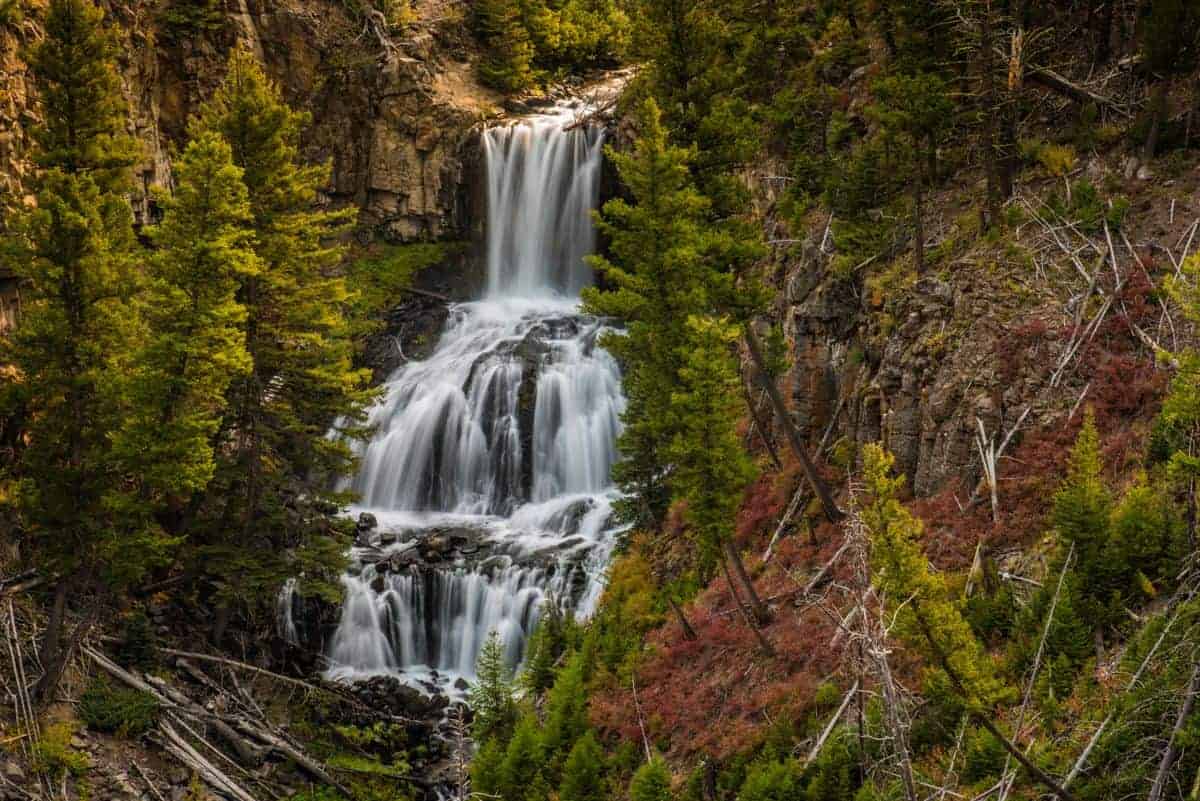
Capturing Undine Falls in Yellowstone by filling the frame.
In the second photo above, you have an intimate view of the falls without any added distraction.
Both make for a striking composition, but which do you prefer?
Set the Mood and Add Drama
There are many ways to capture the mood of a scene with your camera, but filling the frame is one of the most dramatic. When your subject dominates the surroundings, it creates impact, draws the viewer in, and makes for a more intimate scene.
By filling the frame, your portraits will be full of life and your landscapes will tell a more compelling story — all by moving closer to the main elements that you’re trying to capture.
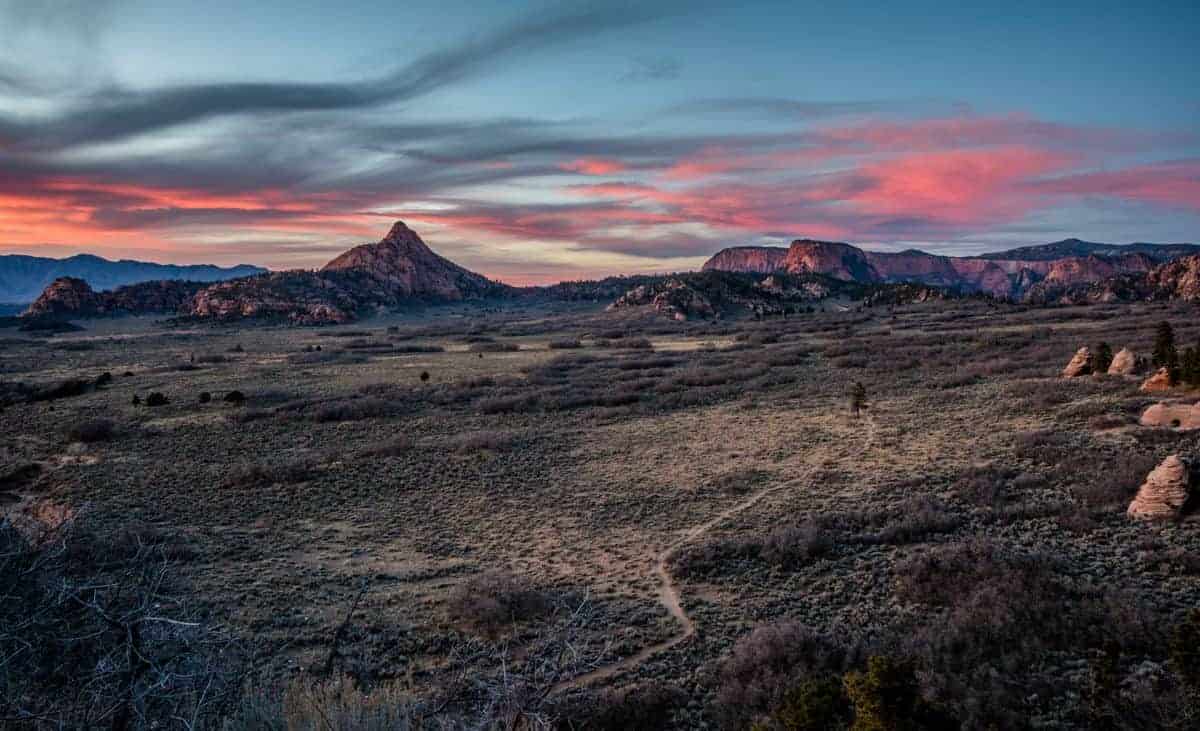
Capturing the beautifully vast landscape at Zion National Park.
Take, for example, one of the many gorgeous scenes you’ll see visiting Zion National Park in Utah.
In the photo above, we are treated to a vast and beautiful landscape, but the individual elements do not make much of an impact.
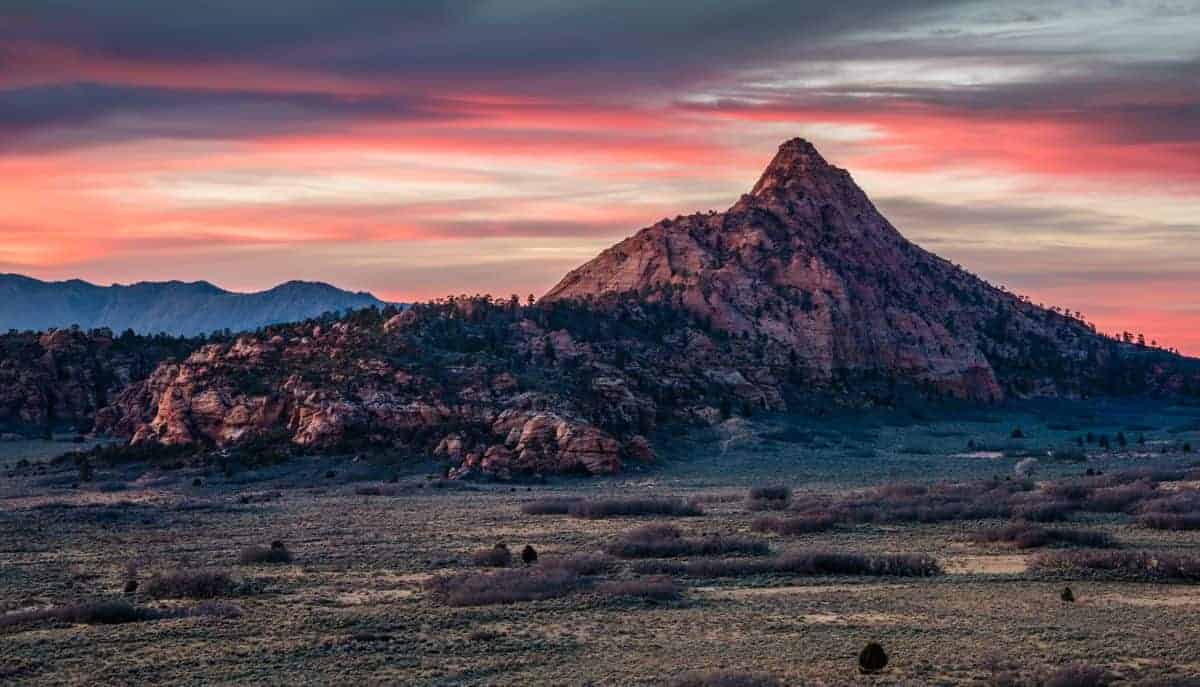
Fill the frame for impact at a location like Zion National Park.
In this second photo, we’ve zoomed in on a lone mountain against the cotton candy sky. Do you notice how the mood changed between the two photographs — from stark and lonely to intimate and enchanting?
Both scenes tell a valuable story and evoke very different emotions.
More Fill the Frame Photography Ideas
Use Fill the Frame When Photographing Animals
When you take a picture of pets, zoo animals or wildlife found in nature, the technique of filling the frame is something to keep in mind to create that impact and intimacy versus a full-body shot.
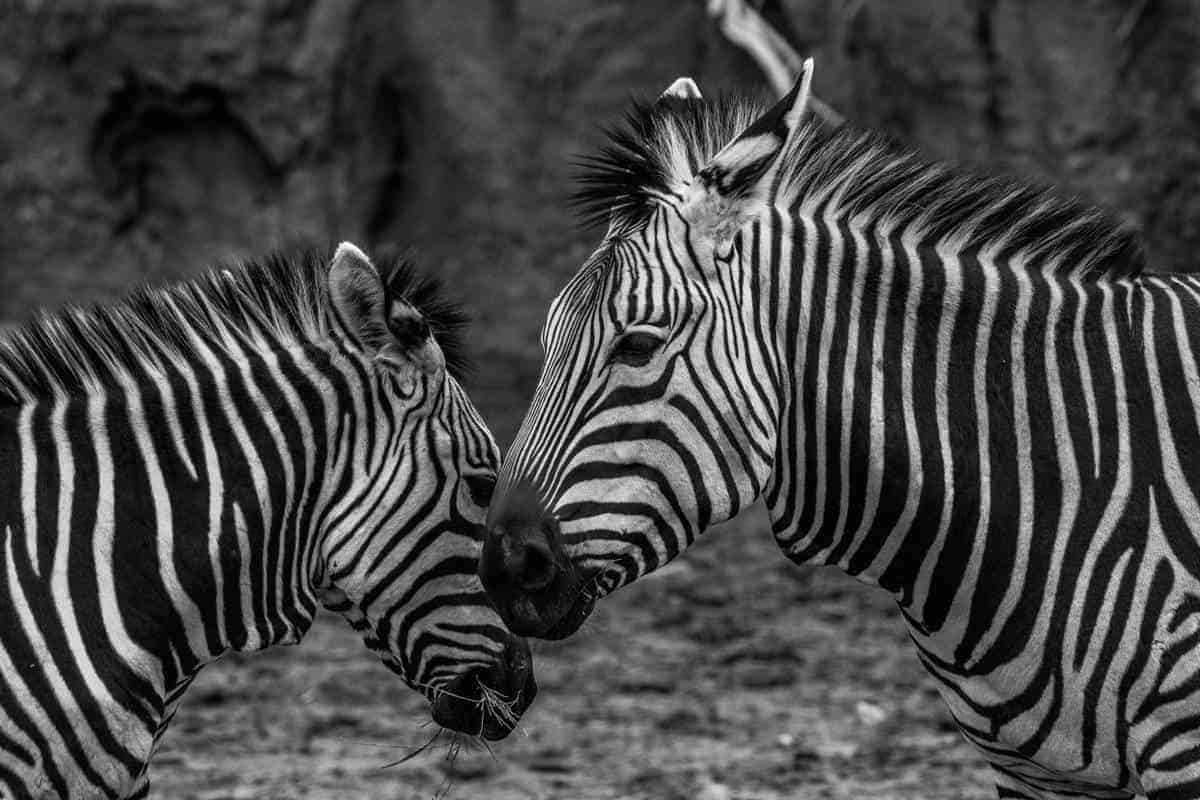
Capture intimate moments using fill the frame photography.
Capture Unique Elements With Fill the Frame Photography
When you see a unique element, or eye-catching contrast of colors, this is a perfect time for fill the frame photography.

Fill the Frame with fun, unique subjects.
Create the WOW Effect by Filling the Frame When Photographing Small Subjects
Move your feet to get close to small photography subjects like flowers, leaves, insects, raindrops, etc.
When you move yourself and your camera to get up close and personal with the element to fill the frame, it will create the WOW effect!
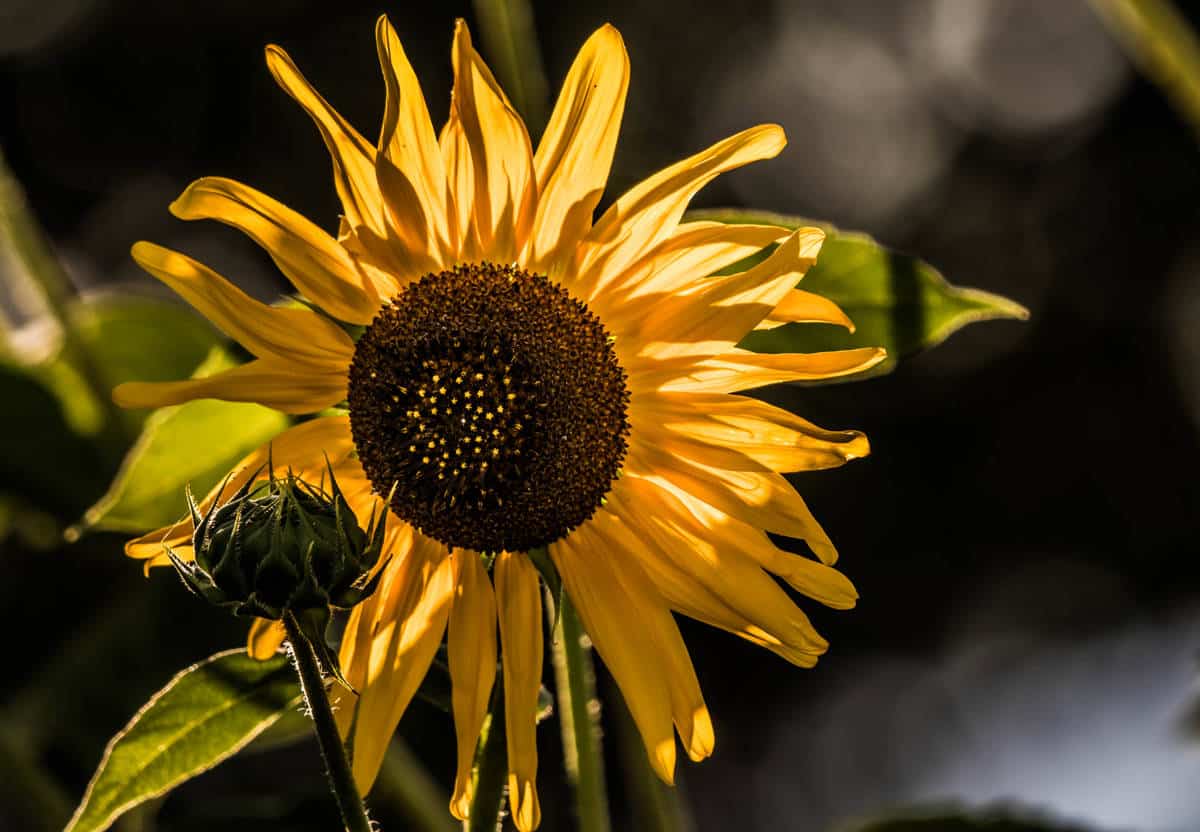
Move your feet to get close to fill the frame with small subjects.
Filling the Frame With Many Individual Subjects
When you’re presented with a scene where there a lots of individual subjects, use the Fill the Frame technique.
The viewer will get a front row seat to what’s happening in the photograph.
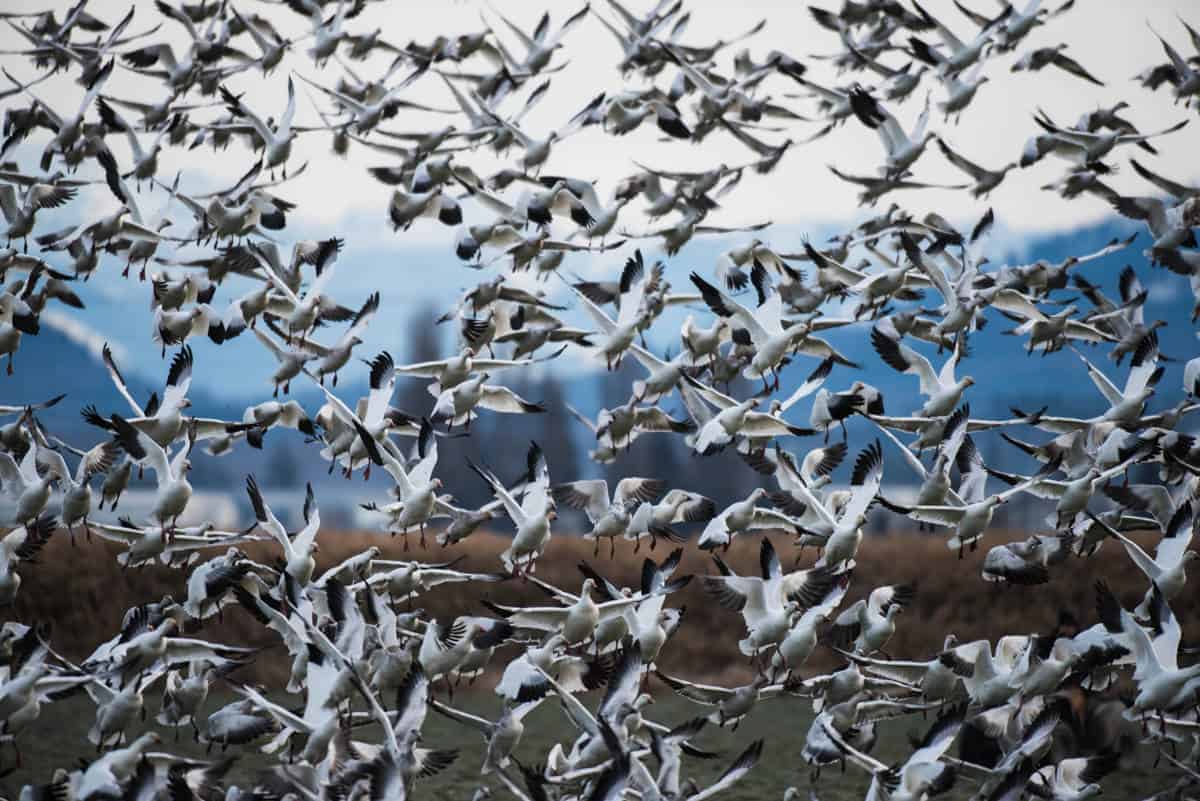
A large number of snow geese fills the frame in this image.
YOUR PHOTOGRAPHY JOURNEY FACEBOOK GROUP
This is the group for you if…
• You have a camera
• You like taking pictures
• You want to improve your photography skills
When not to Fill the Frame in Photography
No composition technique in photography works 100% of the time, and that is true of filling the frame. There will be times when you will want a combination of different elements to tell your photographic story, and times when filling the frame makes for a less interesting photograph.
There are different ways of shooting a scene to create the most impact.
To produce the most interesting image, you have to decide which elements are the most important, and which you want to highlight to create a stunning composition.
There is no right or wrong answer, and the good news is that you can create many different compositions before choosing the one that you like base.
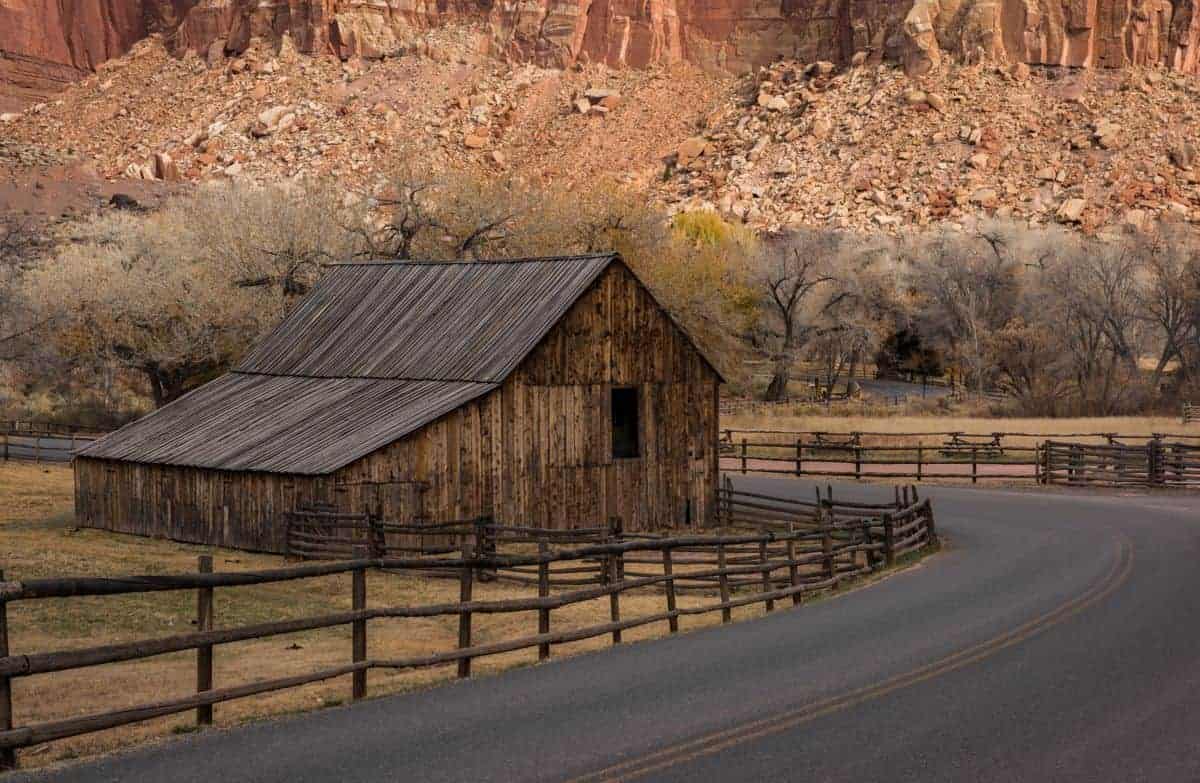
Nice photo, but filling the frame takes away the story of the location.
For example, look at the image above of a popular barn you’ll see when visiting Capitol Reef National Park. In this photo we’ve filled the frame with the barn and surrounding fences.
Nice photo, but look at what happens when we zoom out to capture the entire scene.
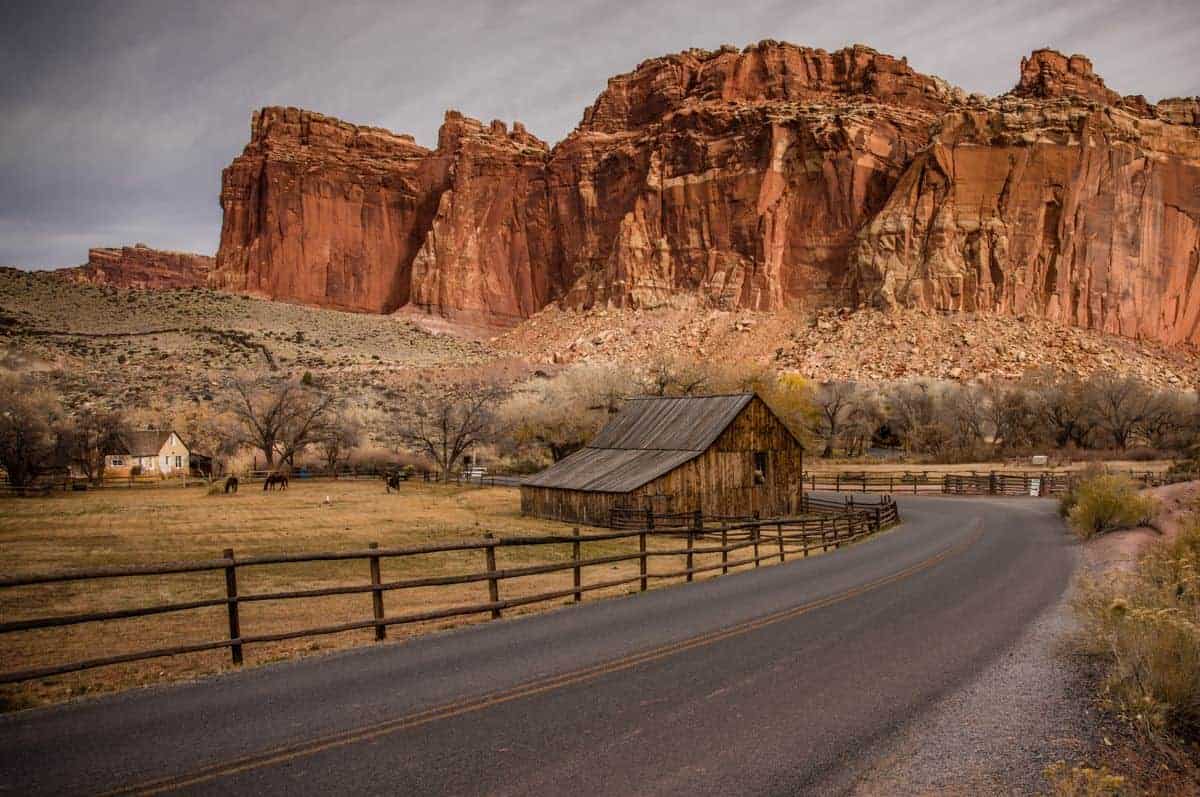
The wide angle perspective works best in this photo.
In this particular case, the impact is not created by the barn, but by the red rocks looming over the barn and the horses in the background.
Don’t Be Afraid to Experiment When Taking Landscape Photos
Fill the frame photography is one easy technique that you can use to take better photos right now.
And the more you get out and shoot, the better your photos will become.
Remember, the most important tool in photography is not fancy equipment or even your camera — it is you!
The post Fill The Frame Photography Technique For Impactful Images appeared first on PhotoJeepers.
from PhotoJeepers https://ift.tt/37sM5cq
via IFTTT


All images looks great. Just wondering, did you edit any of the images or just uploaded what you have captured!
ReplyDelete